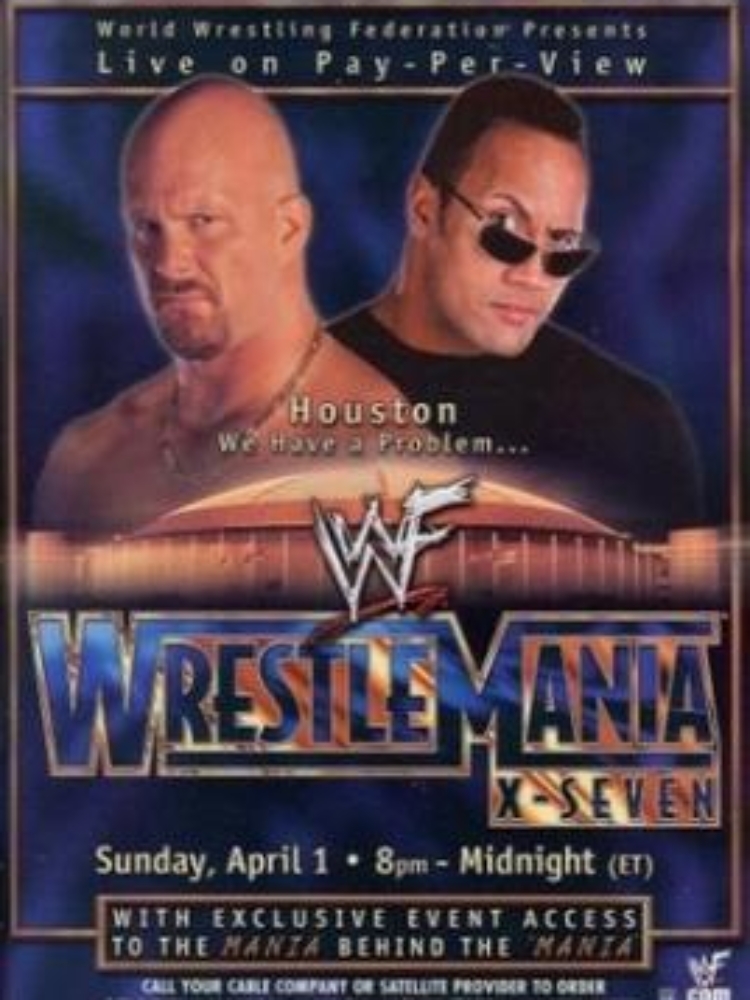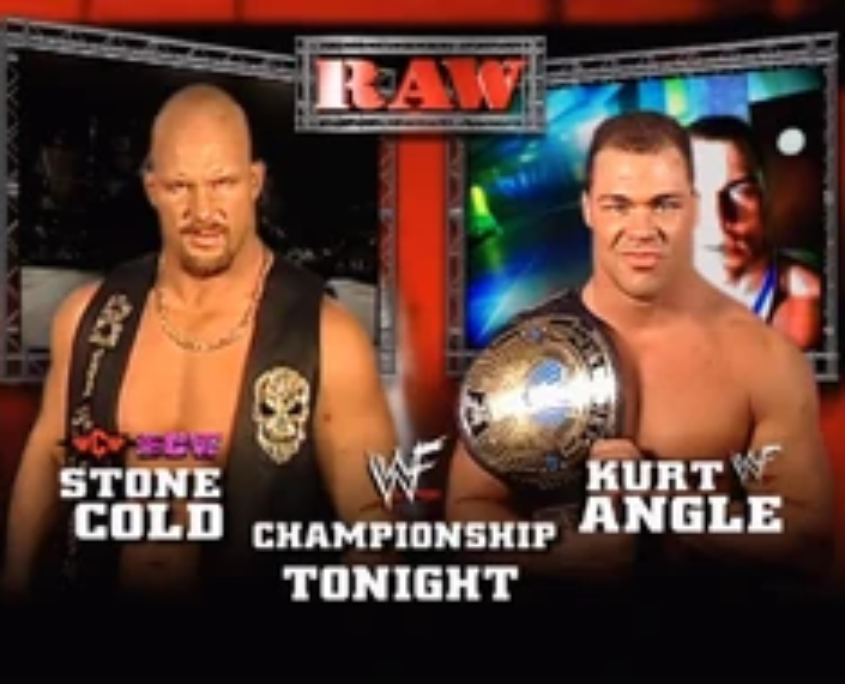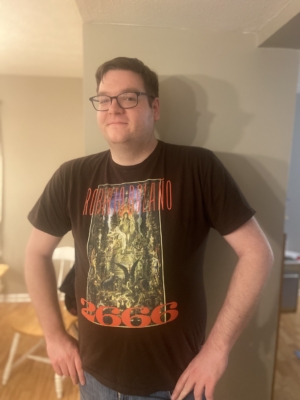Fightin’ Time
 How do you mark the important moments of your life? Do you use pictures, or a digital medium with staying power, like social media? Do you have a diary to help you remember things such as your first kiss or the first time you realized that your parents were human beings just like you? For me, wrestling history is a guidepost for some of my more nebulous memories, as well as a link to some simpler life moments. I always remember wrestling playing some role in those memories, mainly the issues of WWF magazine I was reading. They’re like anchors that make the memories more authentic, and they help validate the trauma that was to come later on in my life. For most of my 30s, I have given up on the idea of nostalgia, but a healthy, limited dive back into the past doesn’t hurt.
How do you mark the important moments of your life? Do you use pictures, or a digital medium with staying power, like social media? Do you have a diary to help you remember things such as your first kiss or the first time you realized that your parents were human beings just like you? For me, wrestling history is a guidepost for some of my more nebulous memories, as well as a link to some simpler life moments. I always remember wrestling playing some role in those memories, mainly the issues of WWF magazine I was reading. They’re like anchors that make the memories more authentic, and they help validate the trauma that was to come later on in my life. For most of my 30s, I have given up on the idea of nostalgia, but a healthy, limited dive back into the past doesn’t hurt.
I have been a fan of wrestling since I was eight years old, and oddly enough, I only know I was eight years old from wrestling. It was 1996, a little over a year before the Attitude Era in wrestling began. Anything before January 21st, 1996, the date of that year’s Royal Rumble, which I must have rented from Blockbuster a hundred times, is a little hard for me to conjure. When I do, the memories exist as snapshots: a trip to Cedar Point, arguments between my mom and dad, a Christmas at my grandparent’s house where I got both an Urkel and MC Hammer doll. These memories are real but feel manufactured, like I only saw them in movies. It is only when I started watching wrestling that I began to remember real memories, ones that aren’t based on second hand knowledge from older adults, or ones not clouded by my pre-adolescent perception of space and time.
It starts with my cousin Boogie, or Warren if you don’t know him. He was a wrestling fan during those hazy years before I turned eight. I assume there was an extra ticket for a June 28th house show (an untelevised show with no storyline adherence) and he, along with me, my brother, and my dad, went there for my first ever wrestling show. The only thing I knew going in was that Mankind and the Undertaker were going to have a match. Their feud was what sparked my wrestling interest. For a kid, it was like watching two real life titans going at it, with the world at stake. All it took was a few seconds of watching those two fight, and I was hooked. I remember when the lights went out for the Undertaker’s entrance, my dad, fresh from his smoke break, held his lighter in the air along with a sea of other small, circular flames.
But what really sold me on being a lifelong wrestling fan came a few months later. Still giddy from the event, I sought out literature on the subject. Maybe at the supermarket, maybe at the Target close to our house, my mom or dad got me my first wrestling magazine: the August issue of the WWF magazine with Sable and Marc Mero on the cover. Writing this, I just realized that it is the twenty-eighth anniversary of that issue, so technically, it is the twenty-eighth anniversary of me becoming a wrestling fan.
When I was eight, and really until I was sixteen or seventeen years old, I had a bedtime, and that bedtime dictated what I could watch on TV. Raw, at that time, was a two-hour show on the USA Network and began at eight PM. My bedtime was nine, so all the important events of that first year of watching wrestling, such as Ahmed Johnson vacating the Intercontinental Championship, Shawn Michaels losing his smile, and the rise of Stone Cold Steve Austin as the company’s savior (in a time when WCW Nitro was dominating what would be called the Monday Night War), were relayed to me by my dad, who would stay up late and tell me what happened when he came home from work.
 Around this time, the seeds for what was going to be my parent’s divorce started to grow roots. The fighting increased and, looking back, the real world with real problems started to creep into my young life. It was right as Bret Hart turned heel and revamped The Hart Foundation when I received my ADHD diagnosis. As an adult who is likely autistic, it’s a diagnosis I dispute. I was removed from my Catholic elementary around the time Dude Love debuted, the third of Mick Foley’s personalities, and was enrolled in a school for kids very similar to me.
Around this time, the seeds for what was going to be my parent’s divorce started to grow roots. The fighting increased and, looking back, the real world with real problems started to creep into my young life. It was right as Bret Hart turned heel and revamped The Hart Foundation when I received my ADHD diagnosis. As an adult who is likely autistic, it’s a diagnosis I dispute. I was removed from my Catholic elementary around the time Dude Love debuted, the third of Mick Foley’s personalities, and was enrolled in a school for kids very similar to me.
I remember a lot based on what magazines I was reading. There’s the magazine with Goldust and Mankind on the cover that was taken away from me at lunch time in the second grade. And then there’s the one with Undertaker on the cover from WrestleMania 13 with the winged eagle belt that I was reading when I went to my first group therapy session, where one of the kids was also a wrestling fan. He was also the first kid to truly scare me. One time, I was reading this magazine with Undertaker on the cover (in the midst of his feud with his on-screen brother Kane), and he threatened to beat me up before the session began. That was the thing. I was never a kid who had very many friends, and just because someone shared my interests, it did not mean that we would get along. The last magazine I remember reading around this time, before adolescence fully kicked in, was the one with Billy Gunn, Mr. Ass, on the cover. This was during his failed main event push that culminated in a Kiss My Ass Match (self explanatory) with The Rock. I remember reading it as my mom got her hair cut, just a few days before my Grandpa died. His death was unexpected, and it was also a harbinger of the years ahead. Around the same time, my mom divorced my dad (around the time Triple H won his first WWF title), and he moved into the first of what would be four apartments he would live in before he died. And I had just turned 11. It would be far from the last death before I became an adult, and it would not be the last one that I would associate with professional wrestling.
From there, the memories become more crystalline. From the special school I went to a public school. I was twelve going on thirteen. While I count those years at the special school to be among my happiest, my three years at public school are among my worst. Bullying increased, as did the apathy of my teachers: two things uncommon in the special school. It felt like a three-year prison sentence for a crime I did not commit. This coincided with WrestleMania 17 and the unofficial end of the Attitude Era as WWE swallowed up WCW and ECW, the other two largest wrestling companies in North America. I was getting older, so it meant a later bedtime, which allowed me to watch Monday Night Raw, still a two-hour show, now on TNN (later Spike TV). My interests besides wrestling, such as movies and books, took up as much space as wrestling did. I watched Kevin Smith’s Clerks for the first time, and read Steinebeck’s The Grapes of Wrath, both a little bit before I could fully understand them. But getting older also meant that I was finding out more about the world and how indifferent and cruel it could be.
Wrestling was changing too. The Attitude Era was in full swing, and I remember having my first sexual feelings directed toward the likes of Stacy Keibler and Trish Stratus, something I know is familiar to a lot of male wrestling fans of a certain age. One of my happiest wrestling memories takes place during my middle school years. The date was October 8th, 2001, and that week the auditions were held for the school’s fall play. They were going to post who was cast on the bulletin board in the lobby of the school’s entrance. I checked the list, and I was ecstatic that my name was on it. But that was not the only good thing to happen that day. I would attend my first live Monday Night Raw, and it was just going to be me and my dad that night.
I don’t remember if I told him about getting cast in the school’s play, but I must have. That night we ate at a local Dave and Buster’s type place where I ran into my favorite teacher from school. I don’t remember most of the card for that night’s show, but I remember the last match. Kurt Angle had beaten Stone Cold for the title at Unforgiven a few weeks before. Austin was a heel at this point, a run not fondly remembered by wrestling fans. It began at WrestleMania 17 earlier that year. That night, Austin won it back, ending the evening on a sour note. It was a bad feeling that even the news of the play couldn’t quite assuage, nor my dad’s insistence that Angle put up a good fight. I had a feeling that something bad was going to happen, and there was nothing that I could do about it.
On the weekend of June 23rd, 2007, Chris Benoit murdered his wife, Nancy Benoit, and his son, Daniel, before killing himself on June 24th, the day of the wrestling pay-per-view Vengeance: Night of Champions. That Sunday started out normally. I remember waking up and hearing my dad’s voice. He had to leave so he could take Grandma, his mother, to the hospital. I was meeting a teacher from high school for lunch as well, and later that day, I purchased a copy of Kanye West’s The College Dropout. After that, all I remember is the phone call my mom got at nine PM. My dad had a heart attack. When we arrived at the hospital, we were met with the news that he had died. My Grandma was a wreck, because all day she thought she was the one about to die, and all the while it was her son, something I assume she carried with her until she died in 2019. I don’t think I slept that night. The next day, my mom, brother, and I went out for breakfast, but none of us were very hungry. The talks with the priest, the lawyer, and a few other important people are about as vivid as a rain-soaked windshield. I remember turning on the TV that night, hoping to escape what was going on for at least the duration of Raw, which was now three hours long and back on the USA Network. And when I did, the show opened up with a memorial for Benoit. We would only know the truth later, and for me, that truth was that my dad and Chris Benoit died on the same day.
I’m still not sure what it means, or if it means anything. Is it evidence of life’s cruelty? Was it time for me to move on and stop watching wrestling? More people have died since then, both family members and wrestlers, and I have not stopped watching. If anything, it means that wrestling, for me, is here to stay. Without wrestling, I may not remember anything at all.
Reid Delehanty lives and works in Indianapolis, Indiana. He is currently an MFA candidate at Antioch University in Los Angeles. He has stories published in the journals Sunflowers at Midnight Magazine, On the Run, and Half and One. For better or worse, he is not one for social media promotion, but if you want to contact him, his email is .





